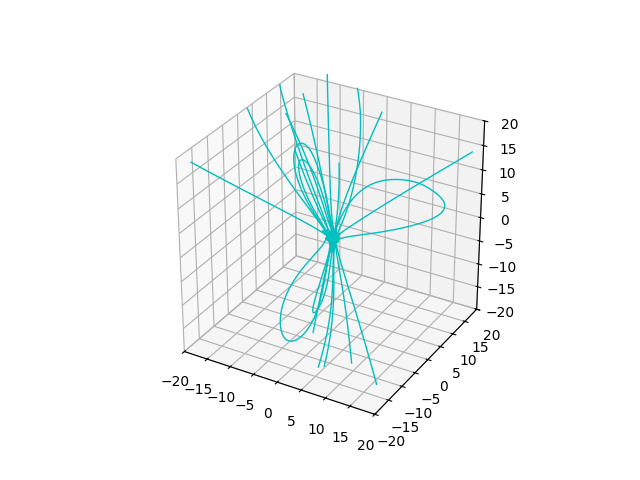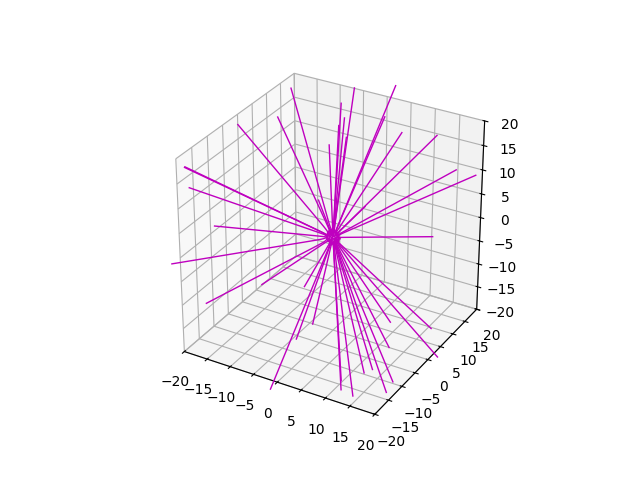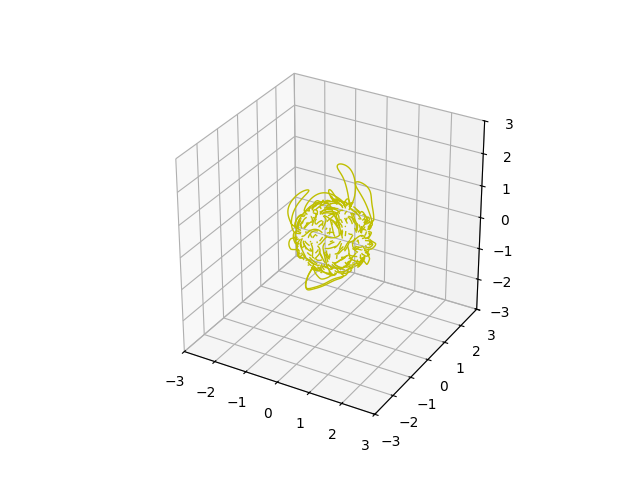Note
Go to the end to download the full example code.
Manipulating Field Data#
Pass in and manipulate in-memory magnetic field data
Attention
The Tracer class enforces a singleton pattern to manage issues that
arise from the underlying mapflpy_fortran object not being thread-safe. As a result, it is
recommended to use the Tracer class in single-threaded contexts only
viz. instantiating one instance of the class at a time.
import matplotlib.pyplot as plt
import numpy as np
from psi_io import read_hdf_by_index
from mapflpy.tracer import Tracer
from mapflpy.utils import plot_traces, fetch_default_launch_points
from mapflpy.data import fetch_cor_magfiles
Load in the magnetic field files
The fetch_cor_magfiles() function returns a tuple of file paths
corresponding to the radial, theta, and phi components of the magnetic field data.
magnetic_field_files = fetch_cor_magfiles()
The Tracer class is, for demonstration purposes, instantiated
without arguments to illustrate how to set the magnetic field files post-initialization.
tracer = Tracer()
Here we use psi-io to read in the magnetic field data
into memory as NumPy arrays, and then assign them to the respective attributes of the
Tracer instance.
Note
When no *args are passed to the read_hdf_by_index() function, it reads in the
entire dataset. For typical MAS magnetic field files, this results in a tuple where:
the first element is the 3D array of magnetic field values (Fortran ordered),
the subsequent elements are the scale arrays (r, theta, phi).
br = read_hdf_by_index(ifile=magnetic_field_files.br)
bt = read_hdf_by_index(ifile=magnetic_field_files.bt)
bp = read_hdf_by_index(ifile=magnetic_field_files.bp)
tracer.br = br
tracer.bt = bt
tracer.bp = bp
Using default launch points, perform forward tracing of magnetic field lines.
launch_points = fetch_default_launch_points(n=256)
traces = tracer.trace_fwd(launch_points=launch_points)
Plot traces using the plot_traces() utility function and adjust
the field of view to be 20 Solar Radii in each direction.
ax = plt.figure().add_subplot(projection='3d')
plot_traces(traces, ax=ax, color='c')
FOV = 20.0 # Rsun
for dim in 'xyz':
getattr(ax, f'set_{dim}lim3d')((-FOV, FOV))
ax.set_box_aspect([1, 1, 1])
plt.show()

Now, we can manipulate e.g. the radial component of the magnetic field data – radially scaling the field by the square of the radius, and retracing from the same launch points.
new_br = br[0] * br[1] ** 2
tracer.br = new_br, *br[1:]
traces = tracer.trace_fwd(launch_points=launch_points)
ax = plt.figure().add_subplot(projection='3d')
plot_traces(traces, ax=ax, color='m')
FOV = 20.0 # Rsun
for dim in 'xyz':
getattr(ax, f'set_{dim}lim3d')((-FOV, FOV))
ax.set_box_aspect([1, 1, 1])
plt.show()

Next, we manipulate the radial component of the magnetic field data by diminishing weaker field regions by a factor of 4, and retracing from the same launch points.
new_br = np.where(abs(br[0]) < 1, br[0] * .25, br[0])
tracer.br = new_br, *br[1:]
traces = tracer.trace_fwd(launch_points=launch_points)
ax = plt.figure().add_subplot(projection='3d')
plot_traces(traces, ax=ax, color='y')
FOV = 3.0 # Rsun
for dim in 'xyz':
getattr(ax, f'set_{dim}lim3d')((-FOV, FOV))
ax.set_box_aspect([1, 1, 1])
plt.show()

Total running time of the script: (0 minutes 0.951 seconds)
